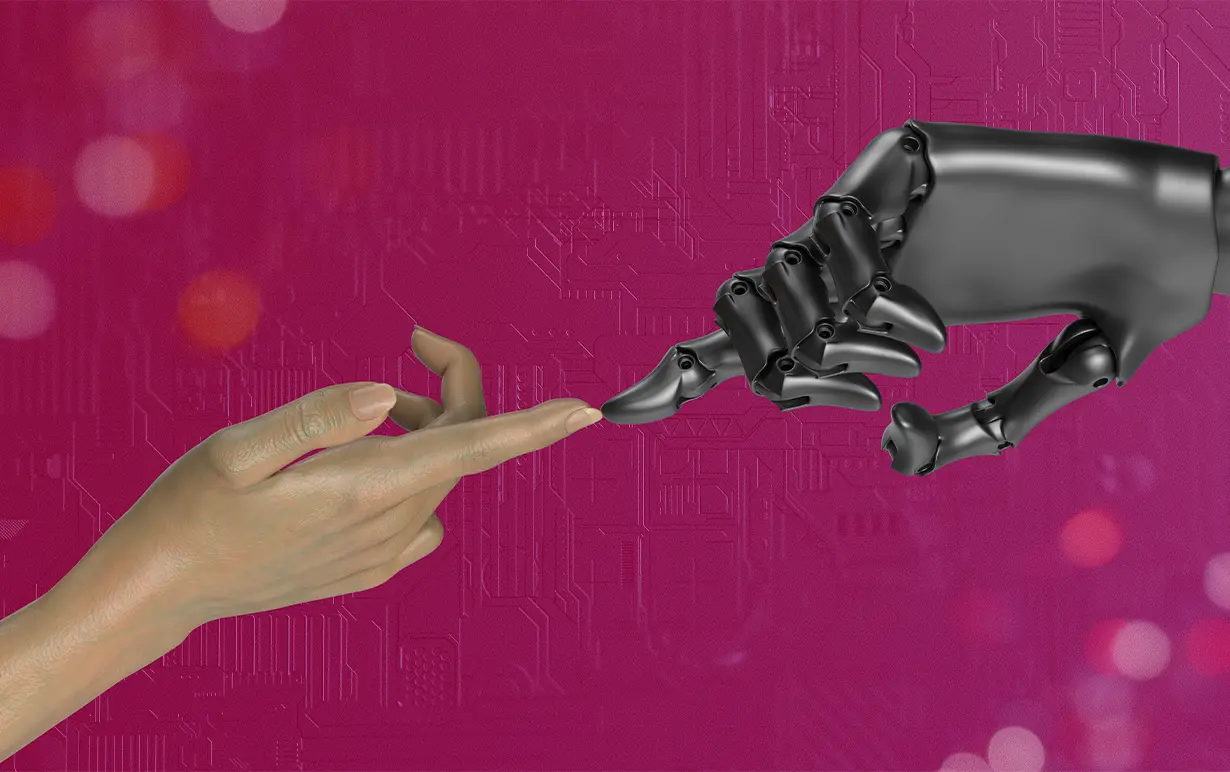Ethical AI: Balancing Innovation with Responsibility
In this fast-moving world, technology has raised and also helped dissolve every sector’s complications. The rise of artificial intelligence (AI) has now detected remarkable advancements and is now bringing a revolution in transforming life and work.
AI is now increasing in every field, whether in any of the places, and can be used at any time. AI is growing in our daily lives and while doing every little to big task. In this blog, you will read about the use of AI in ethical and responsible ways. Ethical application is essential for artificial intelligence to be harmoniously incorporated into society. As we delve into ethical AI, let’s explore the fine line that separates innovation from responsibility.
What does ethical AI explain?
The term ethical itself explains the moral and righteous use of technology. Conscientious development encompasses considerations such as transparency, accountability, reliability, and fairness, as well as keeping the privacy of the data. The main motive of ethical AI is to protect the data from discrimination and unintended consequences in AI algorithms by promoting inclusivity and safeguarding human rights. Following moral principles promotes trust among AI developers, users, and the general public. It also helps strike a balance between the growth of technology and ethical considerations, ensuring that AI serves humanity without harming anyone or escalating already-existing societal imbalances.
Benefits and Risks
Although AI has unmatched advantages, there are also drawbacks. The benefits include increased productivity, better decision-making, and predictive analytics; nevertheless, biases, privacy issues, and possible job displacement are also present. For AI to enrich society rather than exploit it in the future, the proper balance must be struck.
Ways to make it ethical
Here are some of the ways that will help you understand how you can make your AI ethical:
● Exposing the Hidden Discrimination
The minds behind AI algorithms are only as objective as their programmers. Bias concerns have emerged, indicating societal preconceptions in AI judgment. Biased algorithms genuinely impact everything from criminal justice systems to recruiting procedures. It is essential to identify and address these biases in order to create a fair AI environment.
● Maintaining Transparency
AI algorithms are often seen as enigmatic black boxes, making it challenging to understand their decision-making processes. Ensuring transparency in AI operations is crucial for building trust. When users and stakeholders understand how AI arrives at conclusions, it fosters accountability and reduces apprehension.
● Privacy Matters
AI relies on vast datasets, often personal. While this data fuels innovation, it also raises concerns about privacy infringement. Striking a balance between data-driven insights and protecting individual privacy is a tightrope walk. Implementing robust data protection measures is a non-negotiable aspect of ethical AI.
● Understanding the human touch
Artificial intelligence (AI) needs to recognize and react to human emotions, from chatbots for customer service to medical diagnoses. AI won’t become a cold, mechanical force; instead, it will become a sympathetic, understanding companion if innovation and human touch are balanced.
● Educating Users
Empowering users with knowledge about AI and its ethical considerations is vital. A comprehensive understanding of AI’s capabilities and limitations, from schools to workplaces, will help users make informed decisions. This education-centric approach ensures that AI is wielded responsibly across diverse contexts.
What are the challenges of ethical AI?
In order to stay relevant in the modern era, you may face several challenges as part of your obligation to make a loyal and wise decision.
An artificial intelligence system will be biased if the data it is trained on is biased. This may result in some groups of people being treated unfairly. For instance, studies have indicated that individuals with darker skin tones have lower accuracy with facial recognition systems. Misidentification and even unjustified arrests may result from this.
Businesses creating AI systems must ensure the data they use to train their systems is representative of the populations they serve and diverse enough to address these problems.
Since AI systems are frequently opaque, it can take time to comprehend the decision-making process involved. Because of this, it may be difficult to hold these systems responsible for their errors.
Summing it up
This blog has explained how an ethical AI works in a proper way so that there are fewer chances of any risk arising. It’s crucial to reassess and adapt ethical guidelines continually. The rapid evolution of technology requires a dynamic approach to ethics. Regular audits, public discourse, and collaborative efforts will ensure that AI remains a force for good. Ethical AI is not a roadblock to innovation but a necessary checkpoint. Balancing the scales between technological advancement and moral responsibility is the key to creating an AI-powered future that benefits humanity.
At Nettfy, you will be getting the perfect, one-stop solution for all of your needs regarding AI. Nettfy also offers edge-cutting solutions for digitalizing your business by ensuring its profitability in the best possible ways. Our expert team assists in designing the UI/UX to reach the most views on your digital platforms. They have experience spanning more than eight years which will assist you in trusting them without any doubt.


